Unusual progression of renal cell carcinoma with carcinomatosis peritoneii and Krukenberg tumour and alopecia with sunitinib therapy in young female
- PMID: 29409504
- PMCID: PMC5801678
- DOI: 10.1186/s12957-018-1328-3
Unusual progression of renal cell carcinoma with carcinomatosis peritoneii and Krukenberg tumour and alopecia with sunitinib therapy in young female
Abstract
Background: Sunitinib is a multiple receptor tyrosine kinase inhibitor (TKI) used for the treatment of renal cell carcinoma (RCC). It increases the median survival considerably with minimum side effects. Alopecia is one of the rare side effects. Metastasis to the ovary is also rare. We report a case of RCC metastasizing to the ovary developing alopecia early on starting sunitinib.
Case presentation: A 22-year-old hypothyroid girl underwent right radical nephrectomy for T2N0 RCC. Histopathology was clear cell carcinoma. Six months later, she presented with right iliac fossa pain, imaging revealed metastasis to the ileocolic junction and the ovary, an exploratory laparotomy was carried out and, after debulking, the patient was started on sunitinib. Four weeks after the start of the treatment, she developed alopecia. She was continued with sunitinib therapy till progression.
Conclusions: The present case shows a rare metastasis to the ovary and early onset of rare adverse event of alopecia on starting sunitinib therapy. In the presence of confounding factors like hypothyroidism and dandruff, establishing this as an adverse reaction of sunitinib is difficult. This case had a unique metastatic spread with involvement of the bowel, ovary and peritoneal carcinomatosis. Use of adjuvant TKI's after resection of primary tumour in nonmetastatic setting may reduce metastatic rates and increase progression-free survival.
Conflict of interest statement
Ethics approval and consent to participate
The written informed consent was obtained from the patient for publication of this case report. The copy of the consent is available with the authors.
Competing interests
The authors declare that they have no competing interests.
Publisher’s Note
Springer Nature remains neutral with regard to jurisdictional claims in published maps and institutional affiliations.
Figures
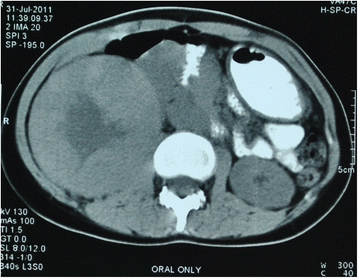
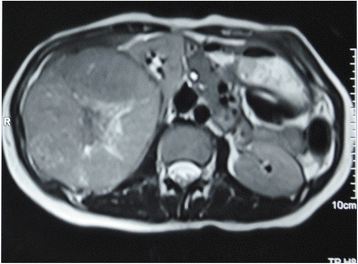
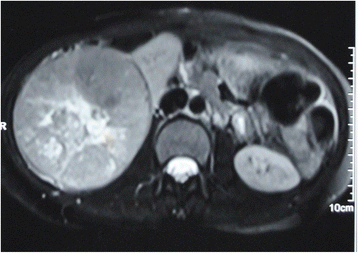
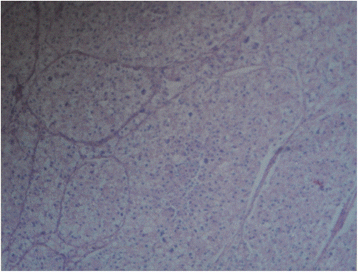
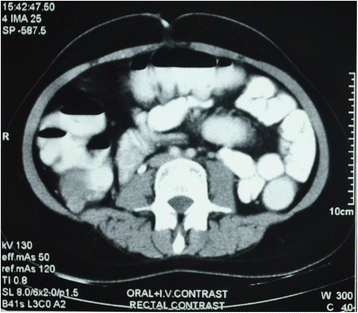
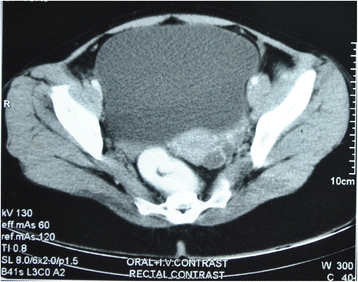
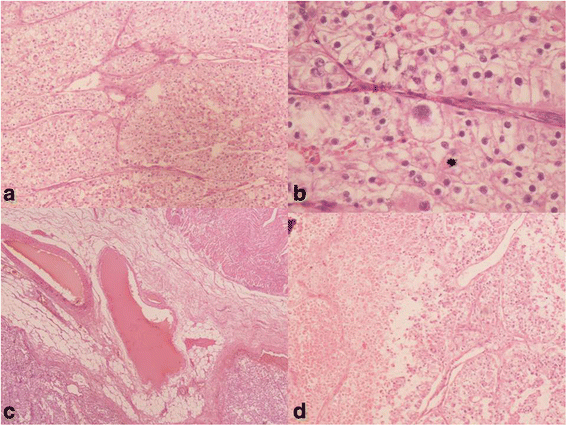
Similar articles
-
Sorafenib or sunitinib as postoperative adjuvant therapy for Chinese patients with locally advanced clear cell renal cell carcinoma at high risk for disease recurrence.Urol Oncol. 2013 Nov;31(8):1800-5. doi: 10.1016/j.urolonc.2012.04.019. Epub 2012 May 31. Urol Oncol. 2013. PMID: 22658883 Clinical Trial.
-
Uncommon side effect with a commonly used targeted agent: sunitinib-induced nephrotic syndrome in a patient with metastatic renal cell carcinoma.BMJ Case Rep. 2014 May 28;2014:bcr2013201183. doi: 10.1136/bcr-2013-201183. BMJ Case Rep. 2014. PMID: 24872478 Free PMC article.
-
Sunitinib in patients with metastatic renal cell carcinoma: Birmingham experience.Oncol Rep. 2010 Aug;24(2):507-10. doi: 10.3892/or_00000886. Oncol Rep. 2010. PMID: 20596640 Clinical Trial.
-
Response to sorafenib after sunitinib-induced acute heart failure in a patient with metastatic renal cell carcinoma: case report and review of the literature.Pharmacotherapy. 2009 Apr;29(4):473-8. doi: 10.1592/phco.29.4.473. Pharmacotherapy. 2009. PMID: 19323623 Review.
-
Sunitinib malate for the treatment of metastatic renal cell carcinoma and gastrointestinal stromal tumors.Clin Ther. 2007 Jul;29(7):1338-53. doi: 10.1016/j.clinthera.2007.07.022. Clin Ther. 2007. PMID: 17825686 Review.
Cited by
-
The Cellular Stress and Cutaneous Manifestations in Renal Cell Carcinomas-A Narrative Review.J Clin Med. 2024 Jun 21;13(13):3640. doi: 10.3390/jcm13133640. J Clin Med. 2024. PMID: 38999207 Free PMC article. Review.
-
Malignant ascites following radical nephrectomy for cystic renal cell carcinoma.BMJ Case Rep. 2021 Jul 13;14(7):e243103. doi: 10.1136/bcr-2021-243103. BMJ Case Rep. 2021. PMID: 34257120 Free PMC article.
References
-
- Kostrzewa M, Zyła M, Władziński J, Stetkiewicz T, Stachowiak G, Wilczyński JR. Metastases of renal clear cell carcinoma to ovary—case report and review of the literature. Eur J Gynaecol Oncol. 2015;36(2):219–222. - PubMed
Publication types
MeSH terms
Substances
LinkOut - more resources
Full Text Sources
Other Literature Sources
Medical

